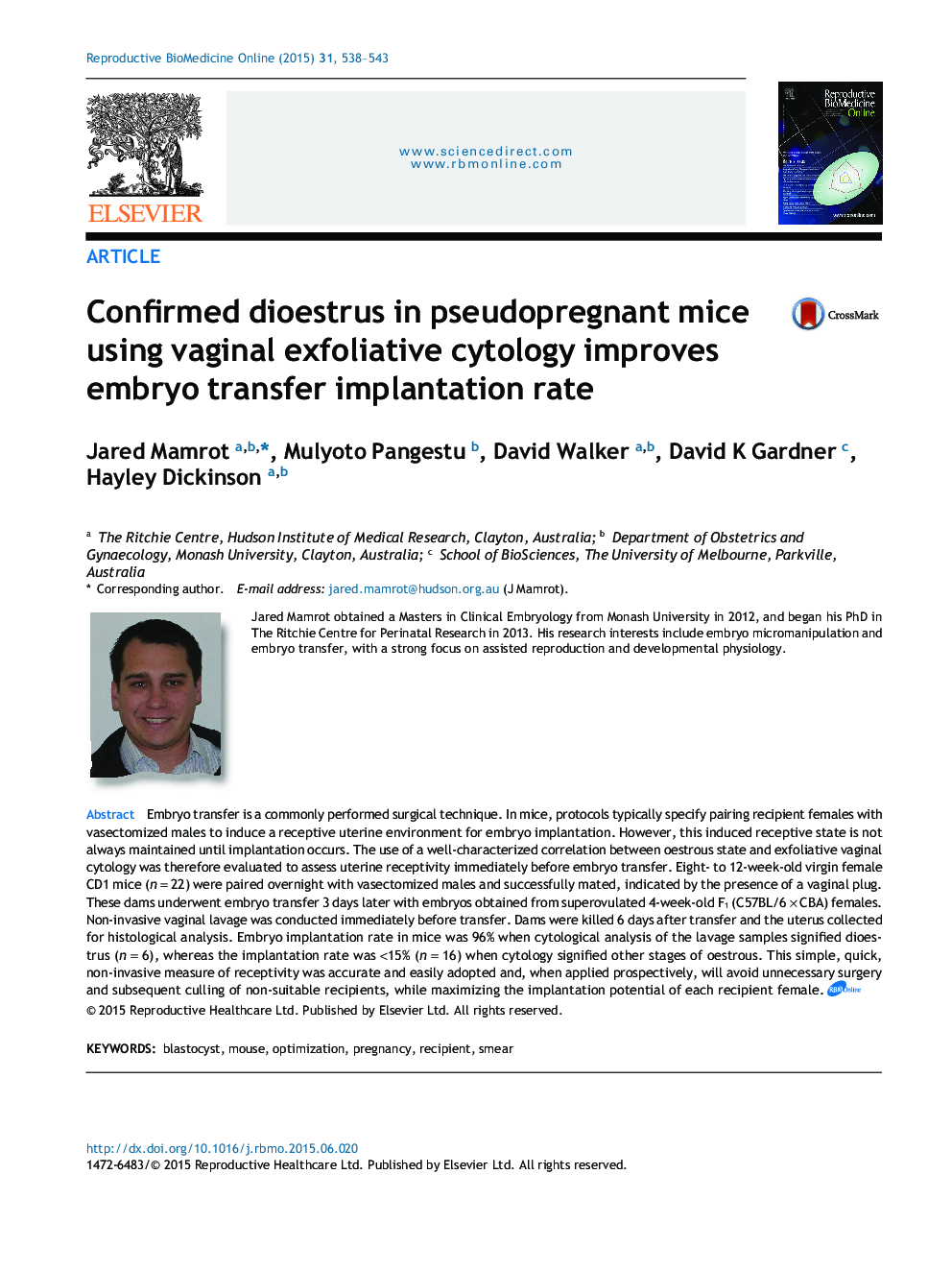| Article ID | Journal | Published Year | Pages | File Type |
|---|---|---|---|---|
| 6188613 | Reproductive BioMedicine Online | 2015 | 6 Pages |
Embryo transfer is a commonly performed surgical technique. In mice, protocols typically specify pairing recipient females with vasectomized males to induce a receptive uterine environment for embryo implantation. However, this induced receptive state is not always maintained until implantation occurs. The use of a well-characterized correlation between oestrous state and exfoliative vaginal cytology was therefore evaluated to assess uterine receptivity immediately before embryo transfer. Eight- to 12-week-old virgin female CD1 mice (n = 22) were paired overnight with vasectomized males and successfully mated, indicated by the presence of a vaginal plug. These dams underwent embryo transfer 3 days later with embryos obtained from superovulated 4-week-old F1 (C57BL/6 Ã CBA) females. Non-invasive vaginal lavage was conducted immediately before transfer. Dams were killed 6 days after transfer and the uterus collected for histological analysis. Embryo implantation rate in mice was 96% when cytological analysis of the lavage samples signified dioestrus (n = 6), whereas the implantation rate was <15% (n = 16) when cytology signified other stages of oestrous. This simple, quick, non-invasive measure of receptivity was accurate and easily adopted and, when applied prospectively, will avoid unnecessary surgery and subsequent culling of non-suitable recipients, while maximizing the implantation potential of each recipient female.
